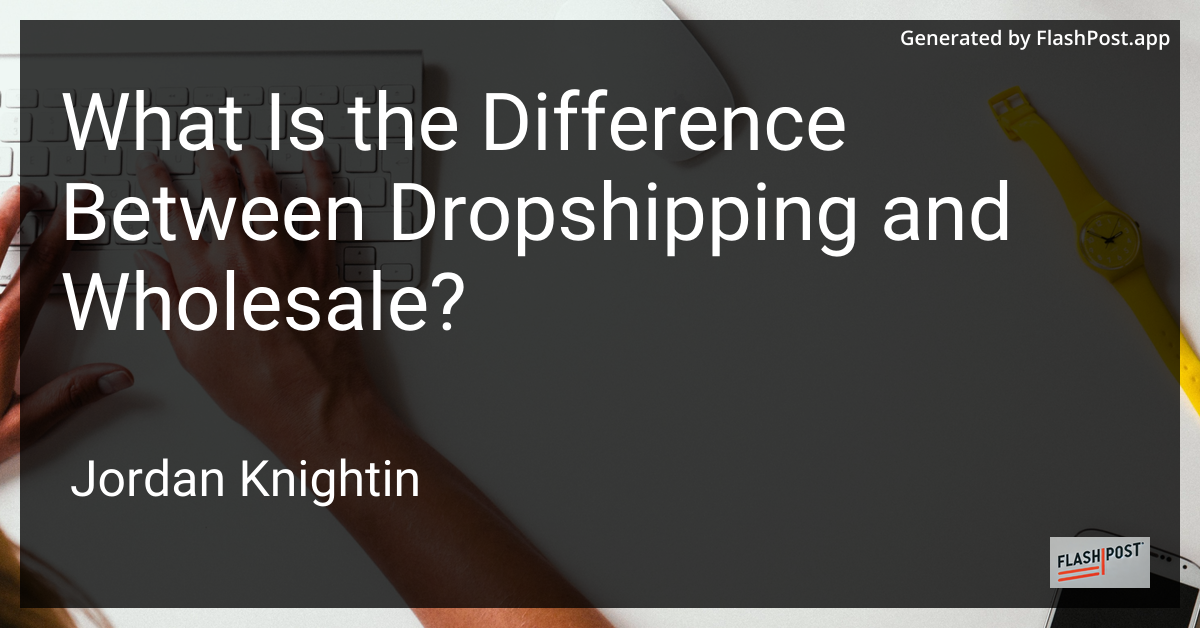

What Is the Difference Between Dropshipping and Wholesale?
In the world of e-commerce, both dropshipping and wholesale offer unique opportunities to entrepreneurs seeking to start their online businesses. These two models, however, possess distinct characteristics that cater to different business needs and strategies. Understanding these differences is crucial in choosing the right path for your business venture.
What is Dropshipping?
Dropshipping is a retail fulfillment method where a store does not keep the products it sells in stock. Instead, when a store sells a product using the dropshipping model, it purchases the item from a third party and has it shipped directly to the customer. As a result, the seller doesn’t have to handle the product directly. Key to this process are platforms that support dropshipping businesses.
Advantages of Dropshipping
- Low Startup Costs: Since you don’t need to purchase and store inventory, the startup costs are significantly lower compared to traditional retail.
- Flexibility and Scalability: You can operate the business from anywhere with an internet connection, and easily scale your offerings by adding new products without significant investment.
- Wide Product Selection: You can offer a variety of products as you don’t need to pre-purchase the items.
Disadvantages of Dropshipping
- Low Profit Margins: Due to the competitive nature of this business model, profit margins are often lower.
- Lack of Control Over Quality and Shipping: The responsibility of product quality and shipping lies with the third-party supplier, which can affect customer satisfaction.
- Complex Supplier Management: Coordination between multiple suppliers can be challenging and may lead to order fulfillment issues.
For those interested in exploring this model, understanding the best Shopify plan for dropshipping and the steps to start an Amazon dropshipping business could be beneficial.
What is Wholesale?
Wholesale involves buying products in bulk directly from manufacturers or suppliers and selling them to retailers or directly to consumers. Wholesalers take full responsibility for storage, inventory management, and direct sales.
Advantages of Wholesale
- Higher Profit Margins: Buying in bulk often results in a lower cost per unit, allowing for more significant profit margins when sold at retail price.
- More Control Over Inventory: With direct oversight of inventory, businesses can manage stock levels and quality control more effectively.
- Established Customer Base: Selling to retailers often results in repeat business and a stable customer base.
Disadvantages of Wholesale
- Higher Startup Costs: The need to purchase large quantities of stock upfront can require a substantial initial investment.
- Storage Space and Inventory Management: Adequate storage facilities are necessary, and managing inventory can be complex and costly.
- Risks of Unsold Inventory: If products don’t sell as expected, you might be left with unsold stock.
Choosing Between Dropshipping and Wholesale
Deciding between dropshipping and wholesale largely depends on your business goals, financial resources, and preferred level of involvement in inventory management. Dropshipping provides a low-risk entry point and is particularly appealing for new entrepreneurs or those testing new product lines. Wholesale, on the other hand, suits businesses ready to invest in inventory and seeking higher margins and control.
Ultimately, both dropshipping and wholesale can be lucrative if executed correctly with sound strategies and detailed market research. Leveraging the right platforms and understanding market trends will help maximize success regardless of the chosen model.
